- Established 1982 -HOME: www.hiltonpond.org
THIS WEEK at HILTON POND Subscribe for free to our award-winning nature newsletter (Back to Preceding Week; on to Next Week) |
FALL MIGRATION: Bird migration has been picking up at Hilton Pond Center, with a variety of species making their first autumn appearances during late September 2021. In addition, non-migrants are showing up in abundance with Northern Cardinals, Carolina Chickadees, and Tufted Titmice going through a "fall shuffle" as they wander in from surrounding areas. And barely a day goes by we don't recapture one (or two, or three) of the banded Carolina Wren youngsters that fledged here this year. Meanwhile, Wood Ducks that disappeared after their ducklings jumped from the Center's pond-side nest boxes have returned and are performing a valuable gastronomic chore.
All text, maps, charts & photos © Hilton Pond Center On 25 September we were pleased to gaze out at Hilton Pond and see three of those temporarily absent Wood Ducks (above)--two drakes and a hen. They were steaming across placid waters with their bills down and slightly open as they wolfed down Rootless Duckweed, Wolffia columbiana, that has covered most of the pond surface spring through fall.
All text, maps, charts & photos © Hilton Pond Center We never had Rootless Duckweed--also called Watermeal because it feels granular to the touch (above)--until 2017 when it showed up that spring, probably brought in on the feet of . . . ducks! During warm weather since then its population has expanded exponentially, creating a pale green sheen that likely slows evaporation but blocks sunlight from aquatic plants beneath. (We suspect duckweed growth was enhanced by fertilizer and sludge run-off from neighboring farms and lawns above us in the watershed.) All along we've been hoping for a huge duck armada to arrive and consume this now-abundant resource; we guess we'll have to be satisfied with just these three weed-eaters for now.
All text, maps, charts & photos © Hilton Pond Center Although it's doubtful this week's hungry woodies will make much of an impact on our overpopulation of Rootless Duckweed, that's okay for this year because cold weather will soon kill off the green stuff. Alas, some of the tiny floating plants will form cysts that sink to the bottom, awaiting next spring for warmer weather and a re-birth when the crop will again prosper. We've been told we could control the duckweed with herbicides--something you can bet we're not going to do at Hilton Pond Center. A non-chemical alternative would be to install an aeration fountain system to agitate the water but that, unfortunately, is not in our operating budget. All text, maps, charts & photos © Hilton Pond Center ANOTHER FALL WARBLER QUIZ
All text, maps, charts & photos © Hilton Pond Center Okay, here’s another of our ever-popular primers on how to identify one of those “confusing fall warblers” that really isn’t all that confusing once you get to know it. On 27 September at Hilton Pond Center we caught a Wood Warbler with a yellow wash--something quite common among members of its family. To be honest, we didn’t exactly know what it was and had to refer to a birding guide to work through the field marks, as follows:
Got it? Not yet?
All text, maps, charts & photos © Hilton Pond Center Hint #1: For us the broad superciliary line (photo above) is, among the fall warblers, a most important field mark. Hint #2: Some observers rely upon the triangular olive-color ear patch as the definitive characteristic. Hint #3: The bird is an immature female (immature males look quite similar, but are usually darker). Still don’t know? Hint #4: The species is well-known as a canopy dweller on its breeding grounds; as such, it often induces ”warbler neck” as birders look straight up into the canopy to see an adult male singing from the tallest perch. Give up? Hint #5: It’s a Blackburnian Warbler! Blackburnian Warblers (BLBW) breed primarily in coniferous and mixed forests of the northeastern U.S., the Great Lakes region, and southern Canada, with a population that extends down the Appalachians in hardwood stands as far as north Georgia. (There is suspicion they nest in extreme northern South Carolina, but we’re unaware of any confirmation.) In autumn, BLBW head for Costa Rica, Panama, and northwestern South America.
All text, maps, charts & photos © Hilton Pond Center One reason we had to consult a field guide to identify this week's Blackburnian Warbler is it’s only the THIRD one banded locally in 40 years! We've seen much more colorful adult males on their breeding grounds in West Virginia (above) but were entirely unfamiliar with immature female plumage. Henceforth, we’ll be looking for that prominent superciliary line and dark triangular ear patch among the many yellowish fall warblers that pass through Hilton Pond Center. All text, maps, charts & photos © Hilton Pond Center SEPTEMBER 2021 FUNDRAISER It is only through generosity of the public-at-large that we are able to continue Hilton Pond Center's non-profit initiatives in environmental education, conservation, and natural history research--including publishing our always-free installments of "This Week at Hilton Pond." On Facebook, "Bill's 75th Birthday Fundraiser" on behalf of the Center and Operation RubyThroat: The Hummingbird Project came within 81% of its goal of $7,500, with the campaign ending on 30 September with a very gratifying $6,089 from 89 donors. (Some "Birthday" contributions came through other avenues than Facebook, so overall the campaign achieved more than the goal amount.) You can still donate at any time via PayPal and Network for Good (see links below after the contributors list). Thanks for ALL your support--past, present, and future! All text, maps, charts & photos © Hilton Pond Center BIRD BANDING SNAPSHOTS Here are a few photos of and comments about avian species banded during the final week in September 2021 at Hilton Pond Center:
All text, maps, charts & photos © Hilton Pond Center This week we banded two bright yellow warblers that were quite different, even though both had necklaces, streaking, and whitish eye rings. The necklace in Canada Warbler (CAWA, female above), however, is diagnostic--especially in adult males--forming a sharp delineation with an unmarked yellow throat. This species lacks wing bars and tail spots and has a gray back. It's one warbler with a geographic name that's actually correct: Canada Warblers nest across southern Canada and in New England and the Great Lakes Region. (Scattered breeding populations occur down the Appalachian chain as far as North Georgia.) They are among the earliest warblers to arrive on their breeding grounds and the first to depart after taking care of business. CAWA are very uncommon at Hilton Pond Center during migration, with only 34 banded in the past 40 years.
All text, maps, charts & photos © Hilton Pond Center The necklace on immature Magnolia Warblers (MAWA, above) is also distinctive--if only because it forms a pale gray crescent that often goes unnoticed in a species whose tail (below) is the most obvious field mark. MAWA are our third-most-commonly banded Wood Warbler with 449 banded since 1984 at the Center. (Yellow-rumped Warblers are by far the leading parulids with 2,339 bandings--it's helpful they spend the winter around Hilton Pond--followed by American Redstarts in second place with 597.)
All text, maps, charts & photos © Hilton Pond Center The gray necklace disappears in adult Magnolia Warblers, but the heavy white band on the tail occurs in all ages and both sexes. MAWA flash these showy tails during courtship but don't seem to use them when foraging to startle insects. They primarily eat caterpillars and relish Spruce Budworms they glean from beneath leaves, needles, and twigs. Although named by early ornithologist Alexander Wilson when he collected one in Mississippi, Magnolia Warblers do not breed anywhere near the historical range for Southern Magnolias. Like many of our warblers they nest across Canada and in New England and the Great Lakes Region--and sparingly at highest elevations in West Virginia. After migrating past Hilton Pond Center they don't go as far south as some warblers, stopping in the Caribbean and Central America into Panama.
All text, maps, charts & photos © Hilton Pond Center This week at Hilton Pond Center we banded one other parulid with noticeable yellow in its plumage--the aptly named Yellow-throated Warbler (hatch year YTWA, above). This otherwise black and white and gray sexually monomorphic bird is one of our rarest warblers locally, with the latest arrival being only the 13th banded since 1982. Such YTWA scarcity is somewhat peculiar because the species nests in South Carolina in the Sandhills/Coastal Plain, the Mountain Province, and the Savannah River Valley along the state's western border; however, Yellow-throated Warblers ARE apparently scarce to absent during the breeding season throughout much of the Piedmont in which the Center lies. Come winter most YTWA fly to Mexico or the Caribbean, with small numbers remaining on the Carolina coast where they frequent Baldcypress swamps. (NOTE: In three successive years on Operation RubyThroat March expeditions to Belize we saw the same banded Yellow-throated Warbler pecking at table scraps in an outdoor dining area at our lodge.)
All text, maps, charts & photos © Hilton Pond Center One bird we captured this week at the Center looked a bit scruffy: A young male Rose-breasted Grosbeak (RBGR, above) that was already replacing some of its brown juvenal body feathers with the jet-black that is a hallmark of adult males. Although young males often resemble females, this one was far enough along in his molt to confirm his gender. A small patch of rose-colored feathers on his lower breast was further confirmation; this patch, if present on females, would be yellow. In flight you can sometimes see underwings--yellow in females, rosy in males. (You'll note we're wearing a glove in our photo above of a hand-held grosbeak. You can guess from the bird's name the reason for that!) Although observers seldom have trouble identifying male and female Rose-breasted Grosbeaks in spring when they are in full breeding plumage, quite often wishful thinking leads folks to asking if fall birds are actually Black-headed Grosbeaks--a western species quite rare in the Carolinas; odds are they are not. (Check your field guide for their significant differences.) Incidentally, Hilton Pond Center is just south of RBGR breeding range (southern Canada, northeastern U.S., and the Appalachians into North Carolina), so we catch them only in migration--and not all that often with just 76 banded since 1982. All text, maps, charts & photos © Hilton Pond Center WINTER VAGRANT HUMMINGBIRDS
All text, maps, charts & photos © Hilton Pond Center After we reported the 20 September appearance of South Carolina's first-ever Broad-tailed Hummingbird at Hilton Pond Center (see link below to Installment #753), we got at least a dozen e-mails from homeowners hoping they had something other than Ruby-throated Hummingbirds (RTHU) at backyard feeders--which is always a possibility. Most said they were seeing hummers with rusty-colored feathers--a field mark that COULD be the sign of several different winter vagrants, including our record-breaking broad-tailed and increasingly more common Rufous Hummingbirds. Indeed, the photo above of an immature female RTHU we banded this week showed buff feathers in its flank and undertail coverts. In vagrant species, however, one should look for rufous coloration at the bases of the rectrices (tail feathers); in RTHU, as above, the base of the white-tipped outer rectrix is greenish, not rufous.
All text, maps, charts & photos © Hilton Pond Center The photo just above of a slightly damp immature male ruby-throat still hanging around Hilton Pond Center the last week in September likewise shows buff in the flanks but not in the tail. Note also the band on the left leg and that this bird has a throat marked with temporary non-toxic green dye. This highly visible mark helps us avoid recapturing him multiple times in our pull-string traps. If you're south of York, South Carolina this fall, be alert for such color-marked RTHU and let us know immediately at RESEARCH if you spot one. (A clear photo would be very helpful.) Likewise, if you're east of the Mississippi, please contact us about any vagrant hummingbird species you may see at your feeders after 15 October. All text, maps, charts & photos © Hilton Pond Center Don't forget to scroll down for lists of all birds banded and recaptured during the week.
All text, maps, charts & photos © Hilton Pond Center BROAD-TAILED HUMMINGBIRD: If you missed our big news last week about an adult female Broad-tailed Hummingbird (above) we banded on 20 September at Hilton Pond Center, the photo essay is still available as Installment #753. She was quite newsworthy because this western vagrant hummer species that breeds in the Rockies had never been reported from South Carolina! All text, maps, charts & photos © Hilton Pond Center HILTON POND SUNSETS "Never trust a person too lazy to get up for sunrise
All text, maps, charts & photos © Hilton Pond Center Sunset over Hilton Pond (above), 22 September 2021 Photoshop image post-processing for this page employs |
|---|
|
"This Week at Hilton Pond" is written and photographed by Dr. Bill Hilton Jr., executive director of Hilton Pond Center for Piedmont Natural History
|
|
|
Please refer "This Week at Hilton Pond" to others by clicking on this button: |
|

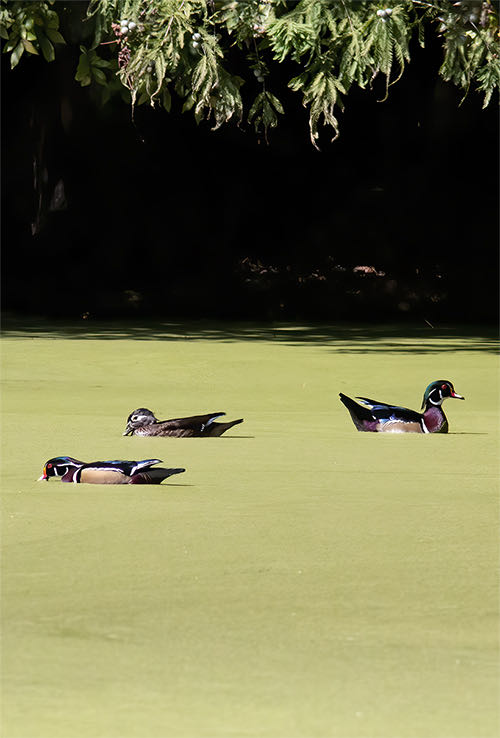
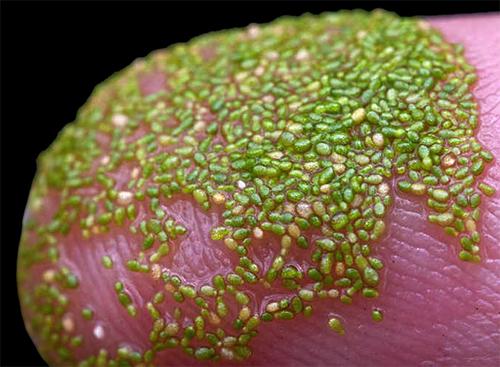
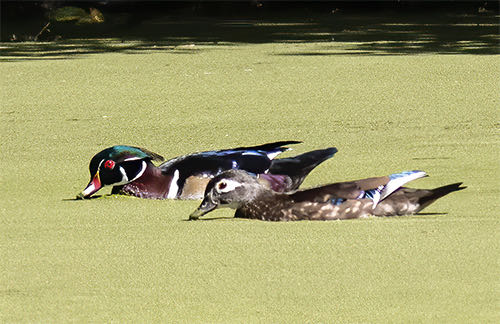
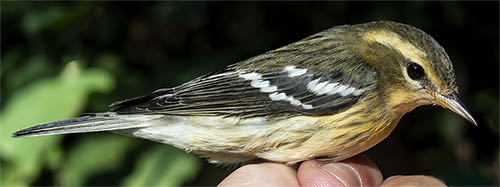
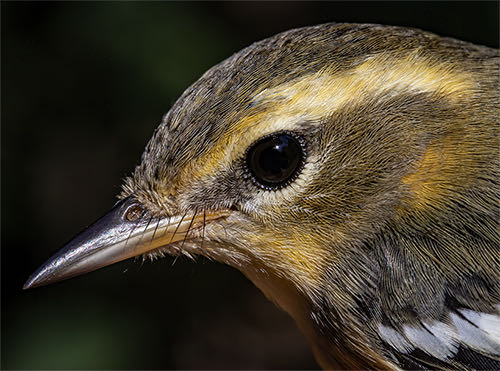
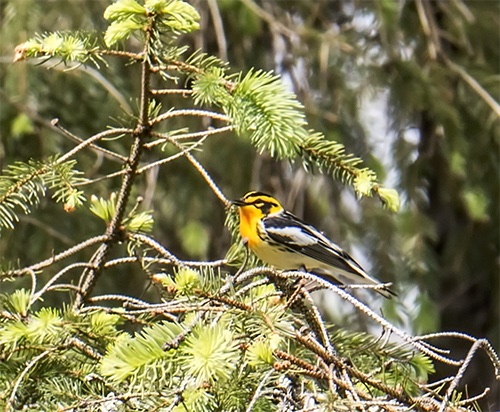

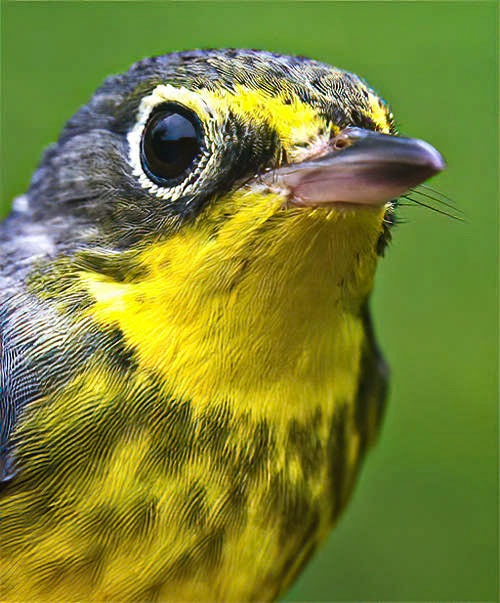
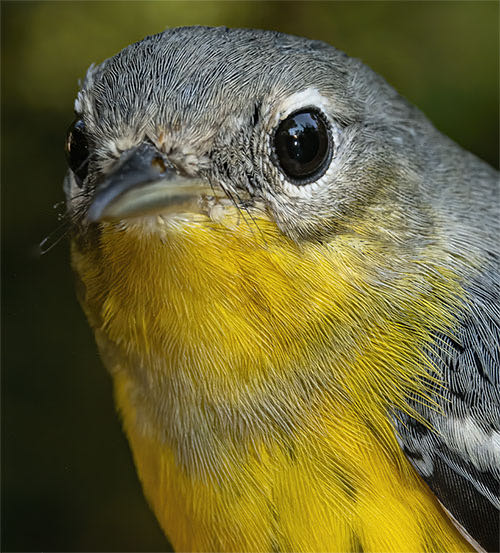
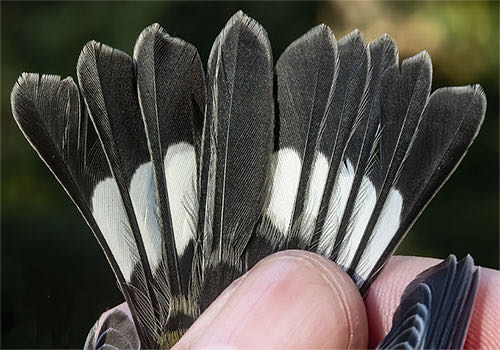

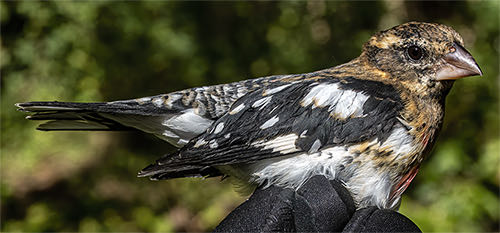
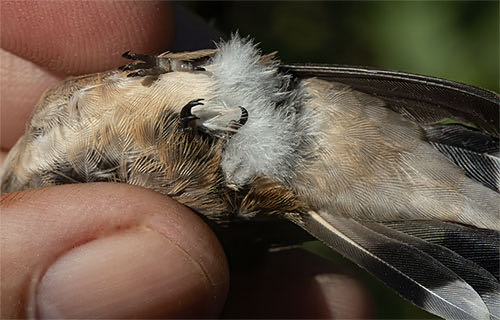
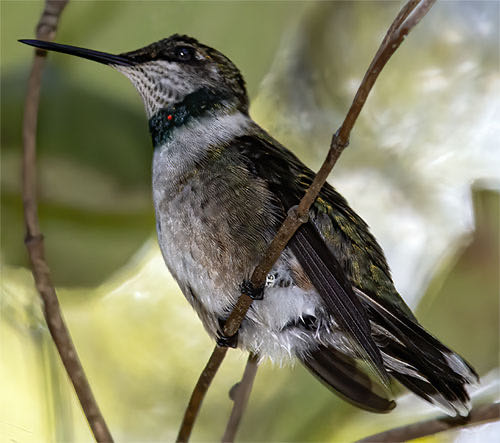

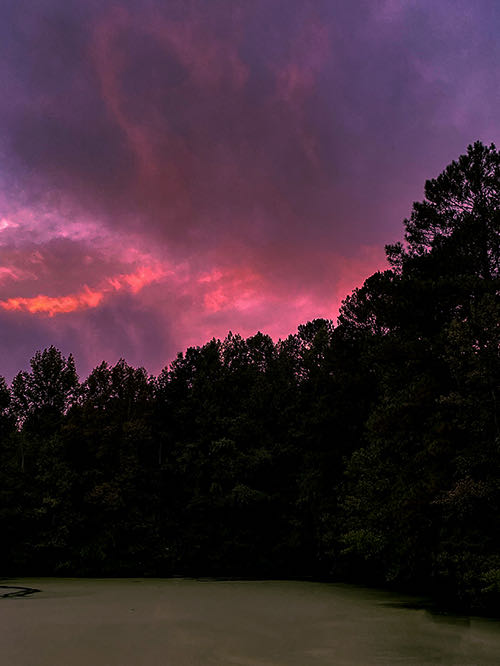









 Please report your spring, summer &
Please report your spring, summer &